Jan 5th 2023 - Monica Cunanan
What Is a Juicer? Types of Commercial Juicers and More
When should you use a juicer instead of a blender? Learn how to use blenders and juicers, as well as the similarities and distinctions between each as well as the benefits and drawbacks of each method, and how each might impact health.
What is a Juicer?
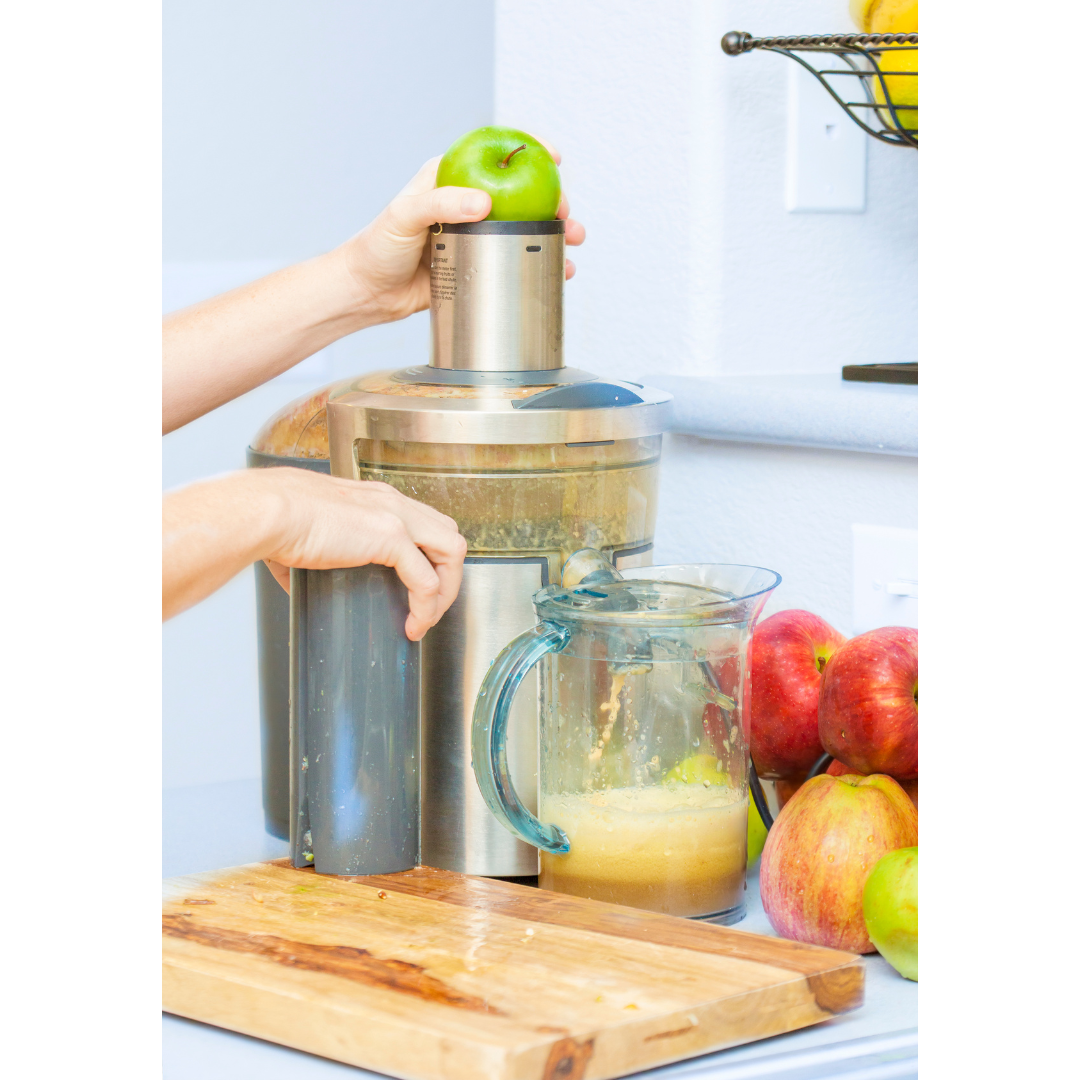
A juicer is a kitchen equipment that extracts juice from fruits and vegetables. Most juicers may also be used to produce fruit cocktails, and a good juicer can be a great addition to any kitchen. Many people juice because they believe it will improve their health by boosting the number of vitamins and minerals they ingest. Furthermore, juicing is quick and simple, especially if you keep fruits and vegetables on hand, so it can serve as a quick supper or snack.
Juicer vs. Blender
The most significant distinction between a juicer and a blender is how they process and prepare fruits and vegetables. Juicers extract the pulp, peel, and other portions of fruits and vegetables, leaving only the thin liquid behind while blenders process and blend all ingredients, including pulp, for richer drinks such as smoothies.
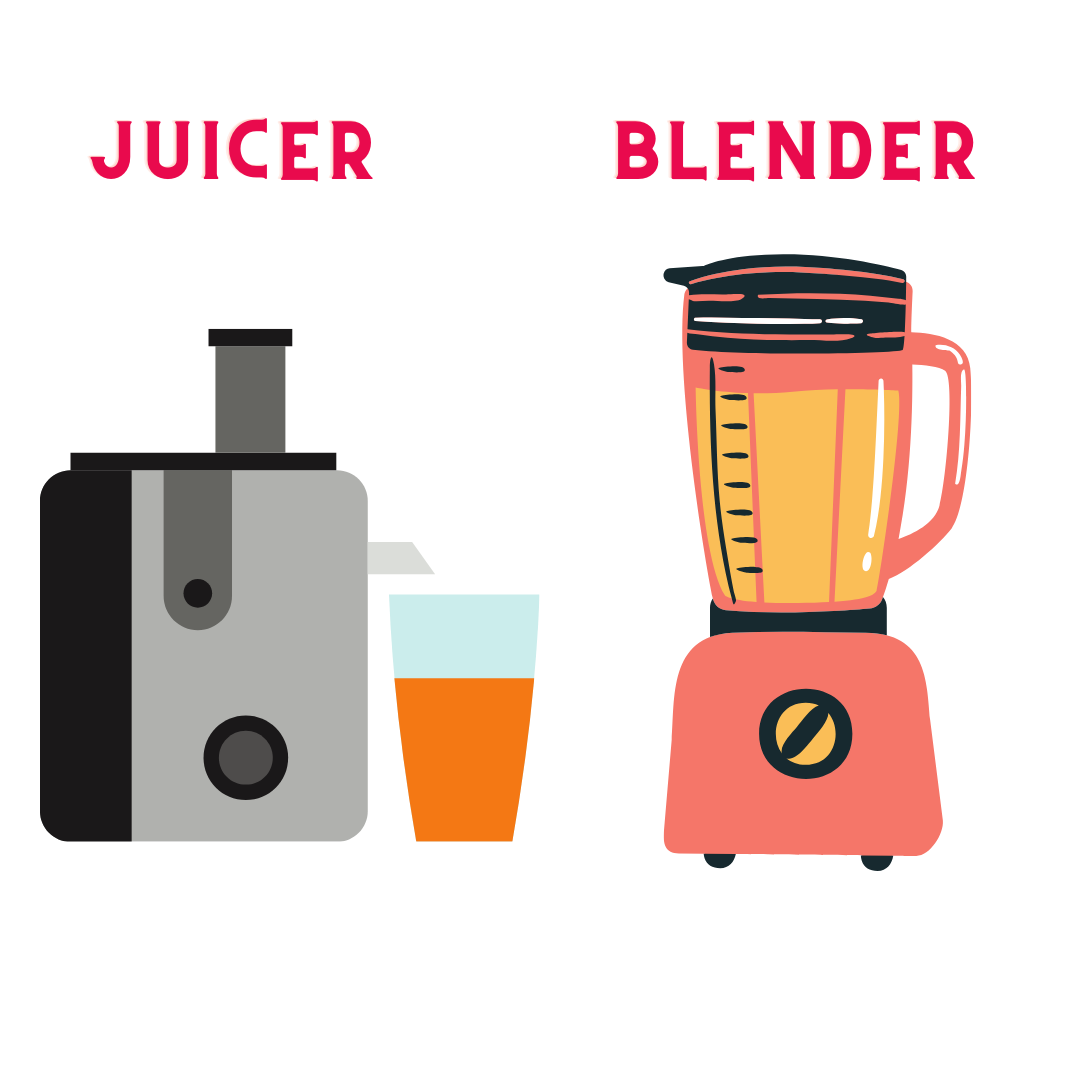
Both are fantastic for various reasons. They will both make it easy to incorporate more fruits and vegetables into your diet, while blenders are versatile kitchen appliances that allow you to experiment with a wide range of components for dishes other than juice, such as cocktails.
Read More: How To Choose The Best Commercial Blenders For Your Restaurant
Types of Juicers
The types of juicers affect your menu. Find out what fits your needs and what sort of juicer is best for your business. This will be determined by the volume of juice you want to offer as well as the types of foods you want to juice.
Centrifugal Juicer
Uses:
Use in medium- to high-volume juice bars, spas, restaurants, or cafés.
They are best for Apples, oranges, celery, limes, lemons, tomatoes, and other hard or firm fruits and vegetables that have had their thick peels, large seeds, and stems removed
How does it work?
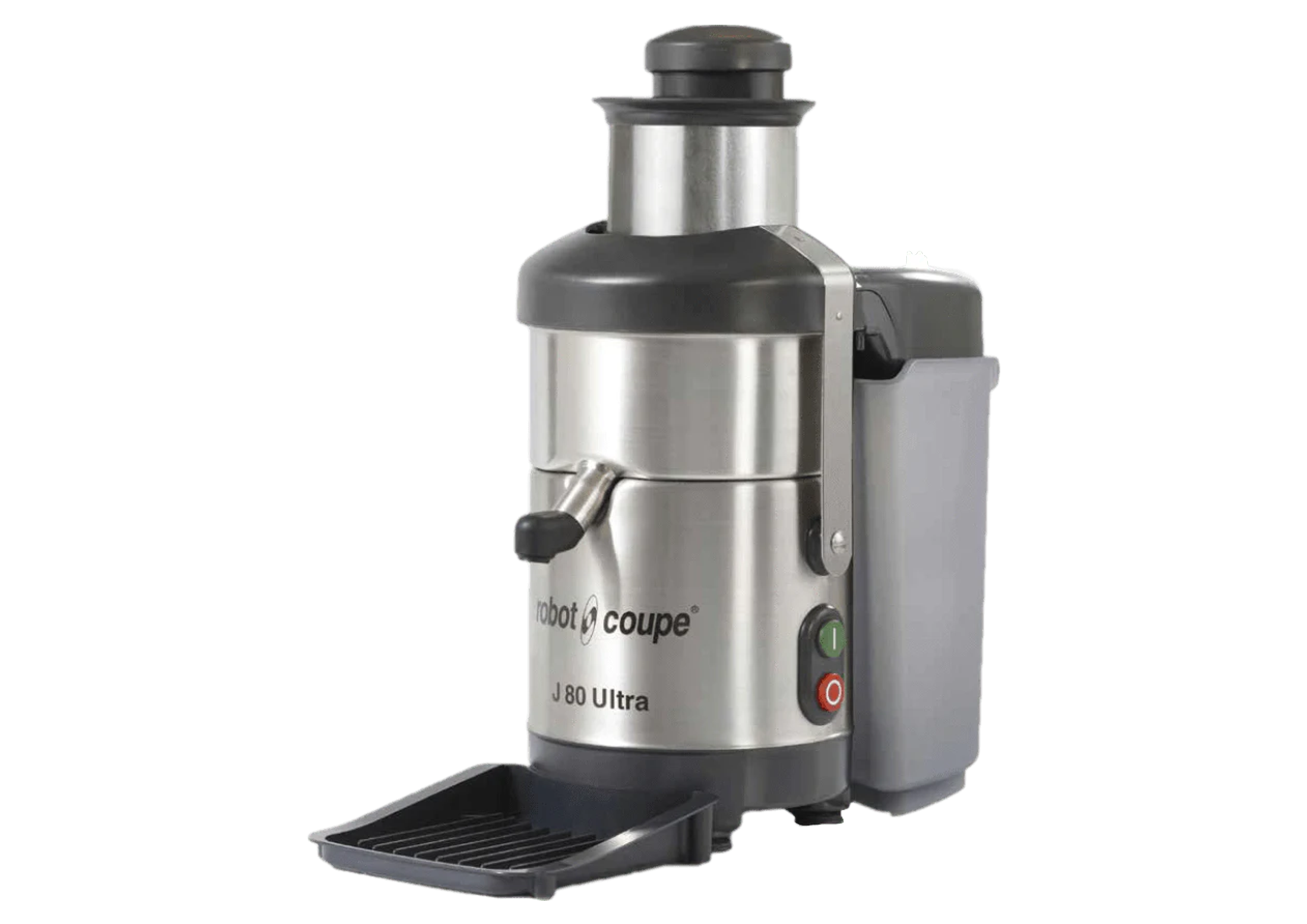
Centrifugal juice extractors work by pulverizing fresh foods and extracting the delicious juice through a spinning metal mesh basket.
- Remove thick skins, large seeds or pits, and stems from fruits before cutting them down to size.
- Allow the juicer to reach full speed before using it.
- Add fruit and veggies gradually.
Model: Robot Coupe J80 Centrifugal Juicer/Juice Extractor
Masticating Juicer
Uses:
Use in medium- to high-volume juice bars, spas, restaurants, or cafés. They are best for spinach, Kale, Apples, Oranges, Celery, Limes, Lemons, Tomatoes, and other hard or soft fruits and to make vegetable juices that have had their thick peels, huge seeds, and stems removed
How does it work?
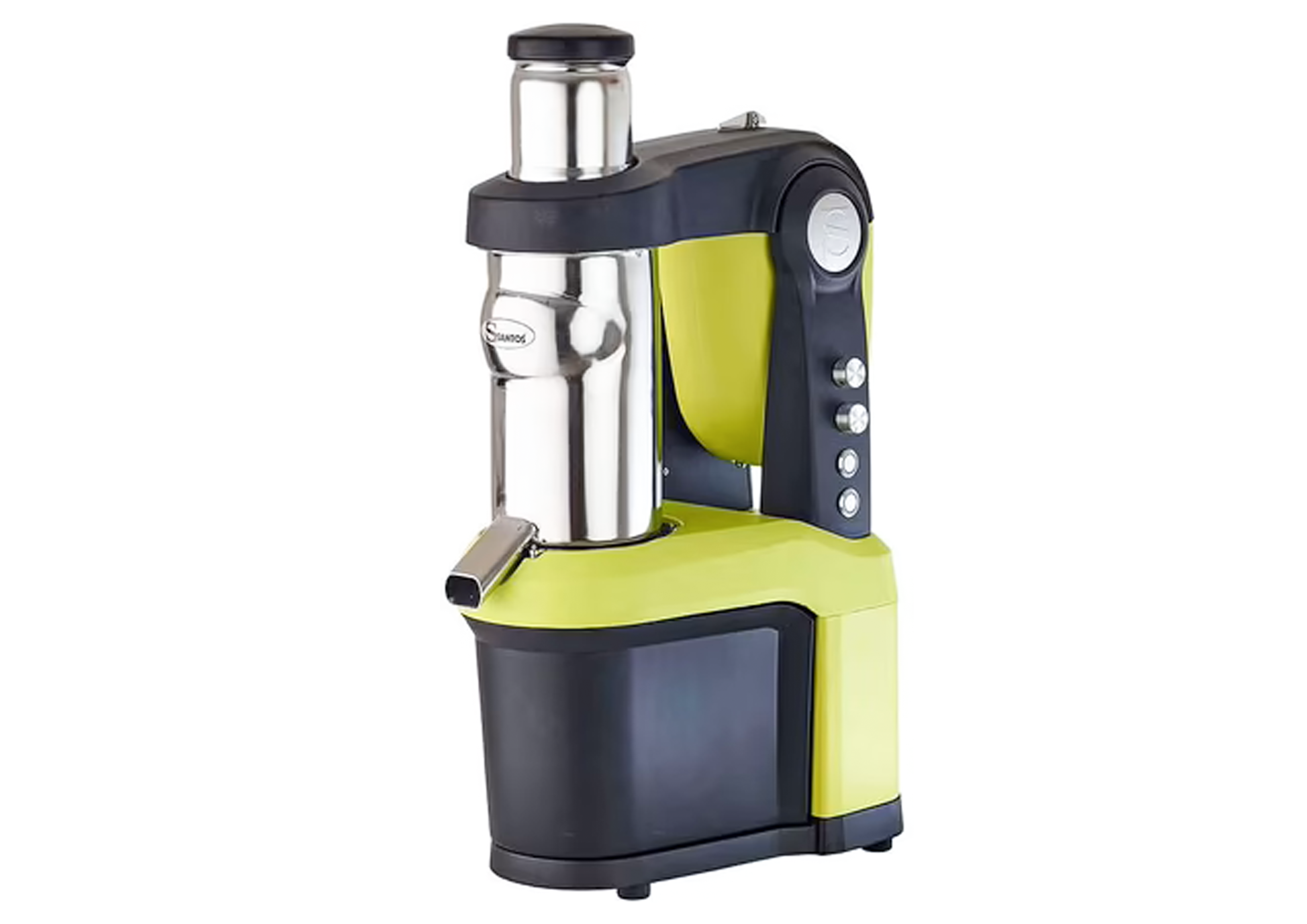
Masticating or cold press juicers use an auger and strainer to extract juice from even the toughest greens.
- Remove peels, stems, and seeds from room temperature fruit and vegetables and chop them in half.
- Turn the unit on.
- Add ingredients to the chute gradually. If necessary, use the included pusher to press down.
Model: Omcan USA 45923
Citrus Juicer
Uses:
Medium-volume use in pubs, restaurants, and concessions.
Best for Lemons, limes, and oranges
How does it work?
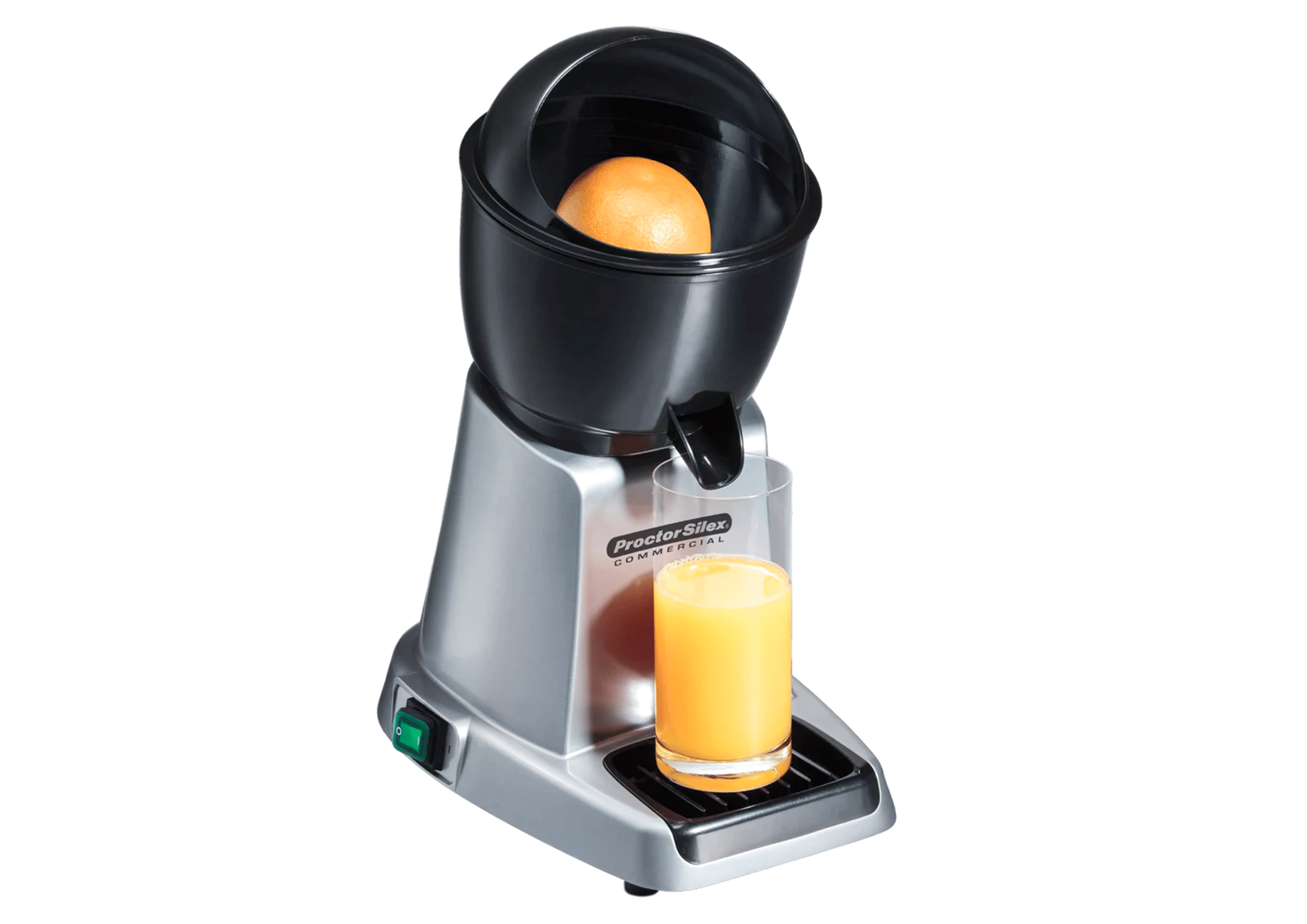
Citrus juice extractors extract juice from citrus using a motorized rotating reamer.
- To begin, cut the fruit in half and prepare it.
- Start the machine.
- Firmly press the sliced side of the fruit on the reamer, but not so hard that the reamer stops.
Model: Hamilton Beach 66900 6" Electric Countertop Citrus Juicer
Sieve
Uses:
Use in medium- to high-volume restaurants, bakeries, or motels.
Cut the entire fruit, whole berries, chopped olives, pre-cooked vegetables, sauces, bisques, and ground seafood are all examples of what this product is used for.
How does it work?
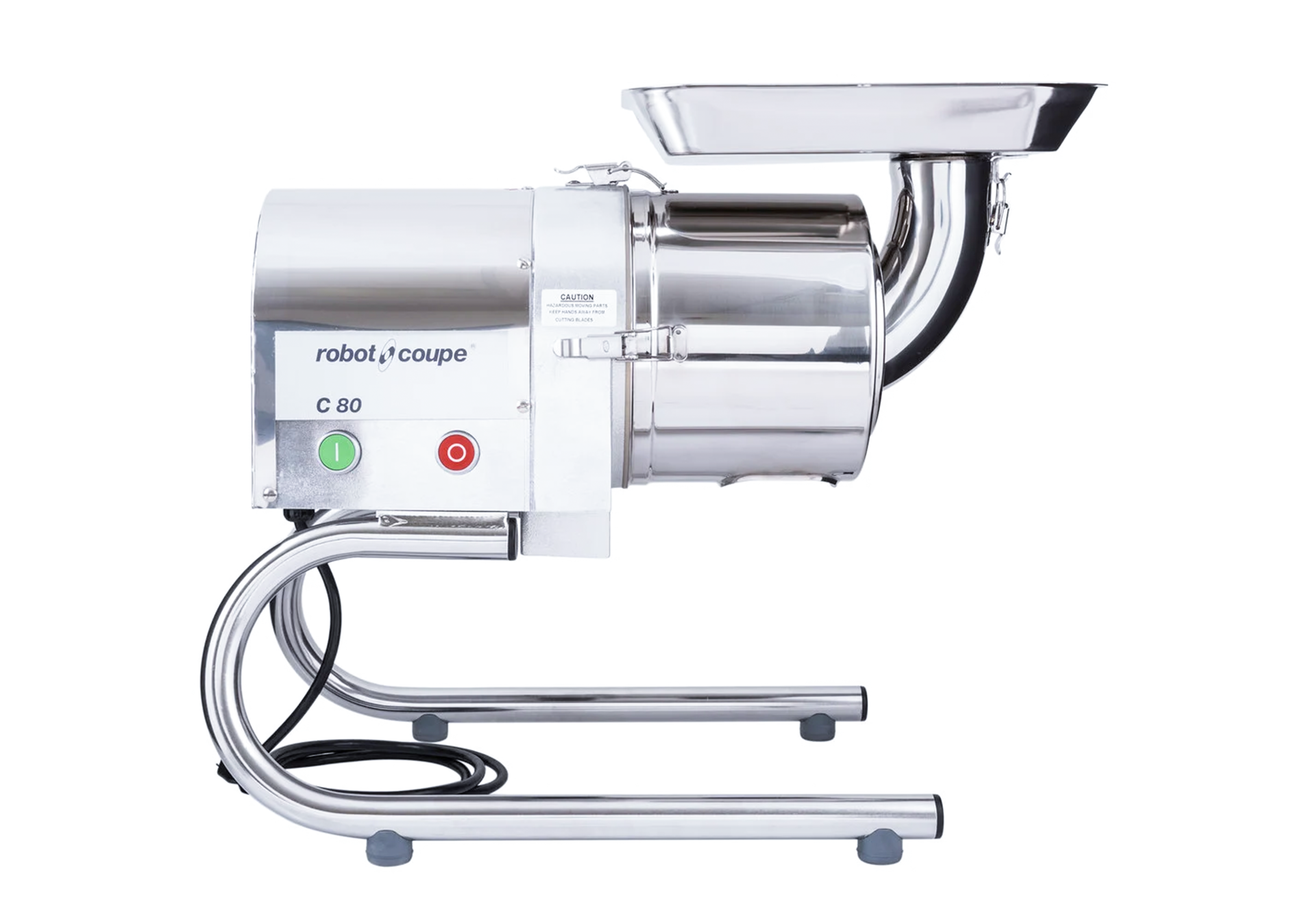
This type of juicer is used as a sieve to separate seeds and skins from the juice.
- Before you begin, be sure you have followed the manufacturer's instructions for preparing items for processing.
- Fill up the product tray.
- Turn on the unit.
- Feed the ingredients slowly into the feed chute and collect the fruit or vegetable juices in a separate container.
- Serve when you feel like you have collected good amounts of fruit juice.
Model: Robot Coupe C80 Automatic Pulp & Juice Extractor
Orange Juice Machine
Uses:
Use in medium- to high-volume markets, spas, hotels, restaurants, or cafes. These are best for oranges as the name suggests.
How does it work?
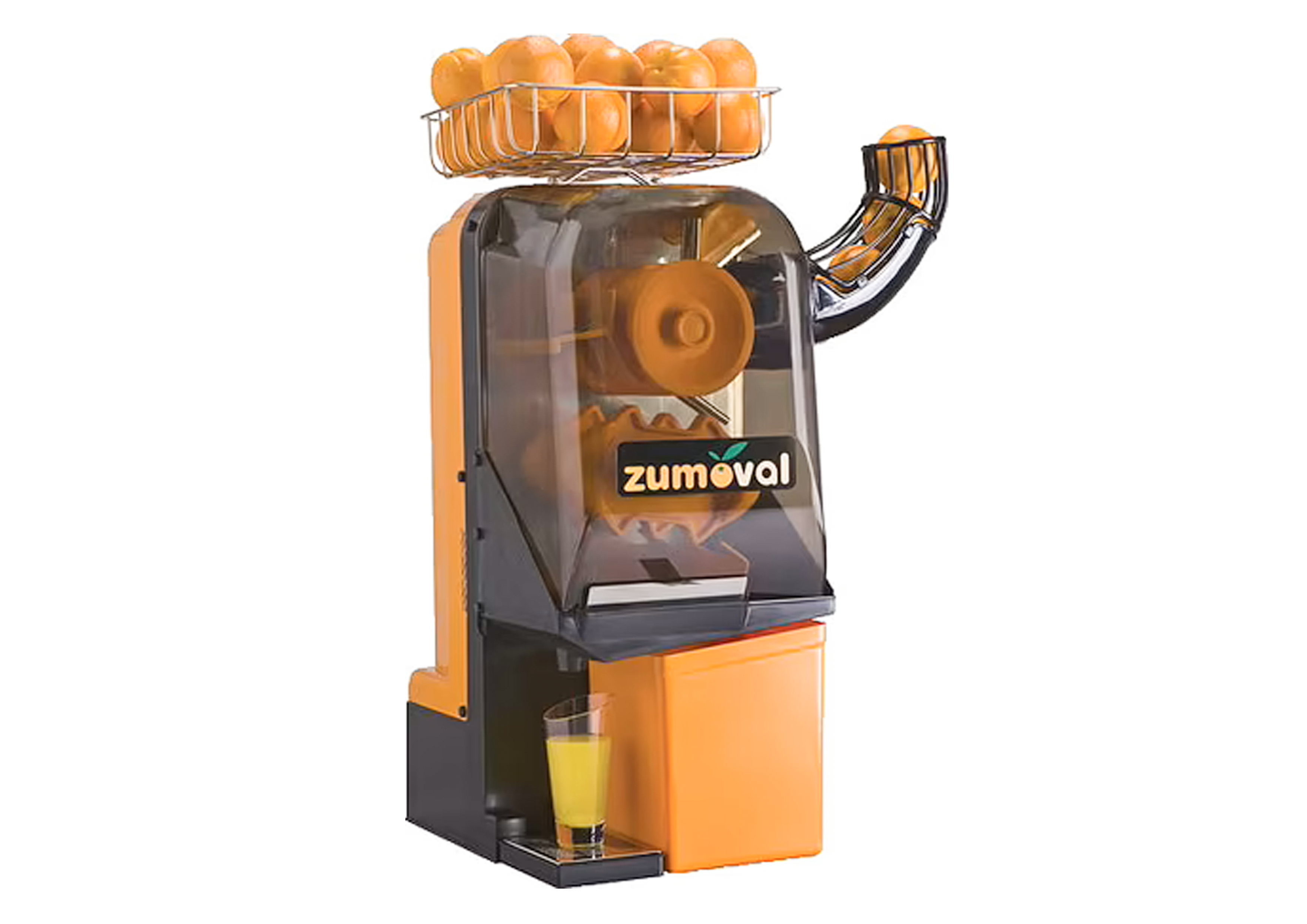
- Make sure the machine is ready to go.
- Fill the feeding tube with fruit pieces.
- Orange juice machines differ, but in general, push the lever to start squeezing and the stop button to halt squeezing.
- Collect orange juices in a juice container.
Model: Omcan USA 39517
Reamer
Uses:
Low-volume, sporadic use in bars and cafes.
Best for Lemons, limes, oranges, and grapefruit
How does it work?
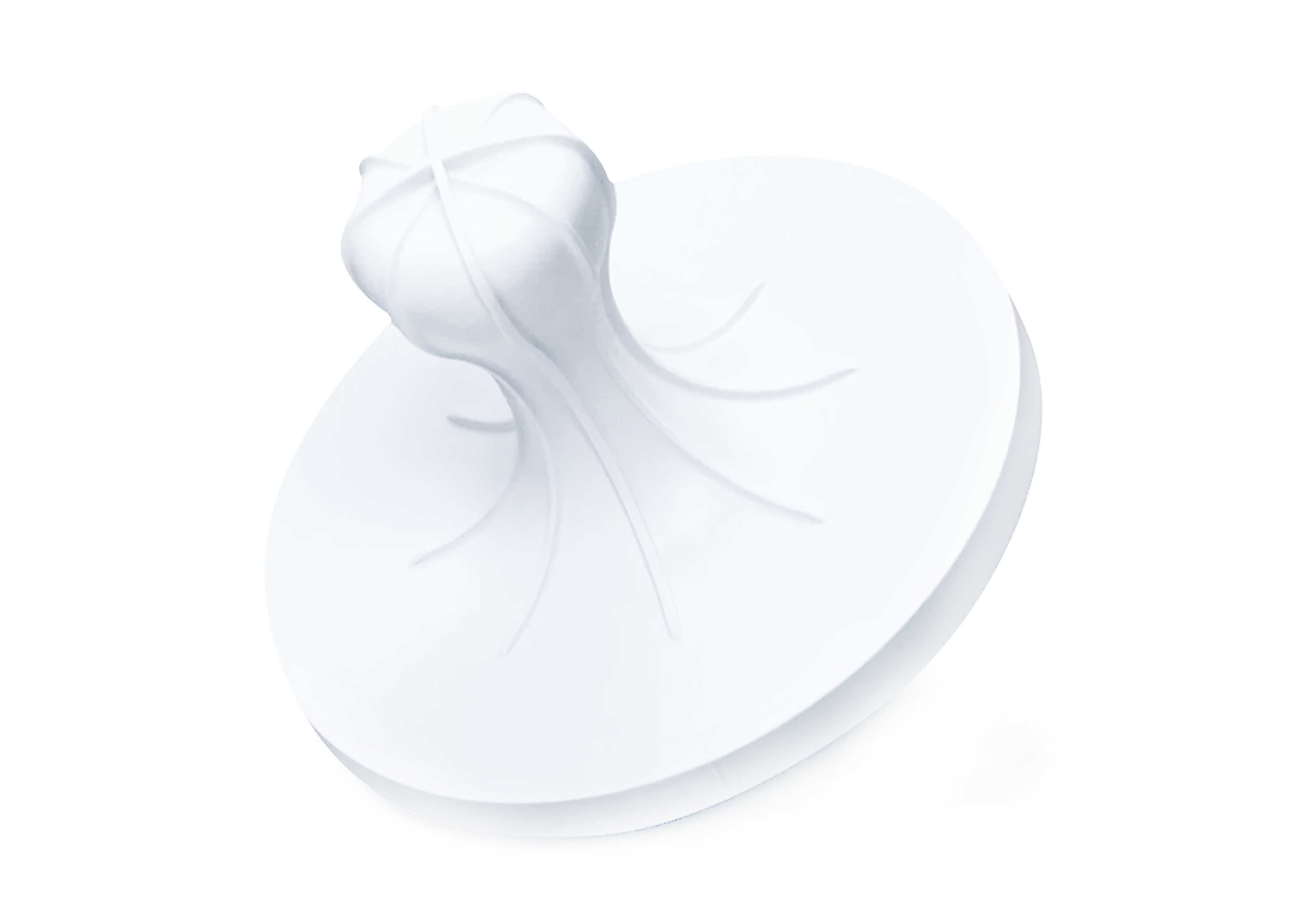
- Cut the fruit in half.
- To release juice, press the reamer into the cut side of the fruit and twist forcefully.
Model: Waring CAC76 Lemon Reamer
Citrus Squeezer
Uses:
Low-volume, infrequent use in bars, bakeries, or cafes.
Best for citrus fruits such as lemons, limes, and oranges
How does it work?
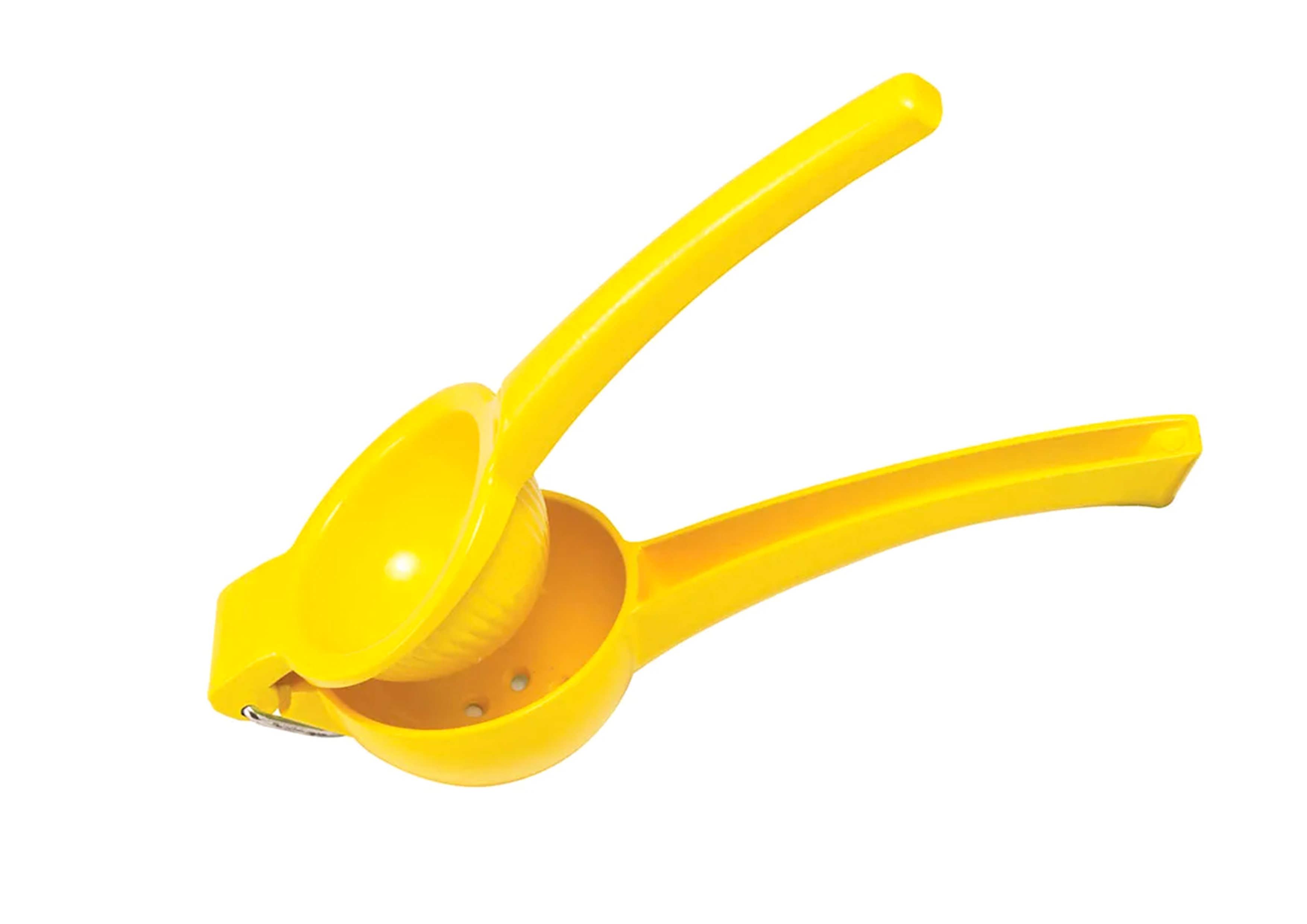
- Cut the fruit in half.
- Place the citrus fruit in the citrus squeezer cut side down for optimal effectiveness.
- To invert the peel and get the juice, squeeze the handles together.
Model: TableCraft H119Y
Hand Press Juicer
Uses:
Low- to medium-volume use in bars, cafes, or concessions.
Best for lemons, limes, and oranges
How does it work?
- Cut the fruit in half.
- Place the fruit cut side down on the manual juicer.
- Close the press and remove the juices from fruits by pulling it down on the juicer's handle.
The Advantages of Fresh Juice
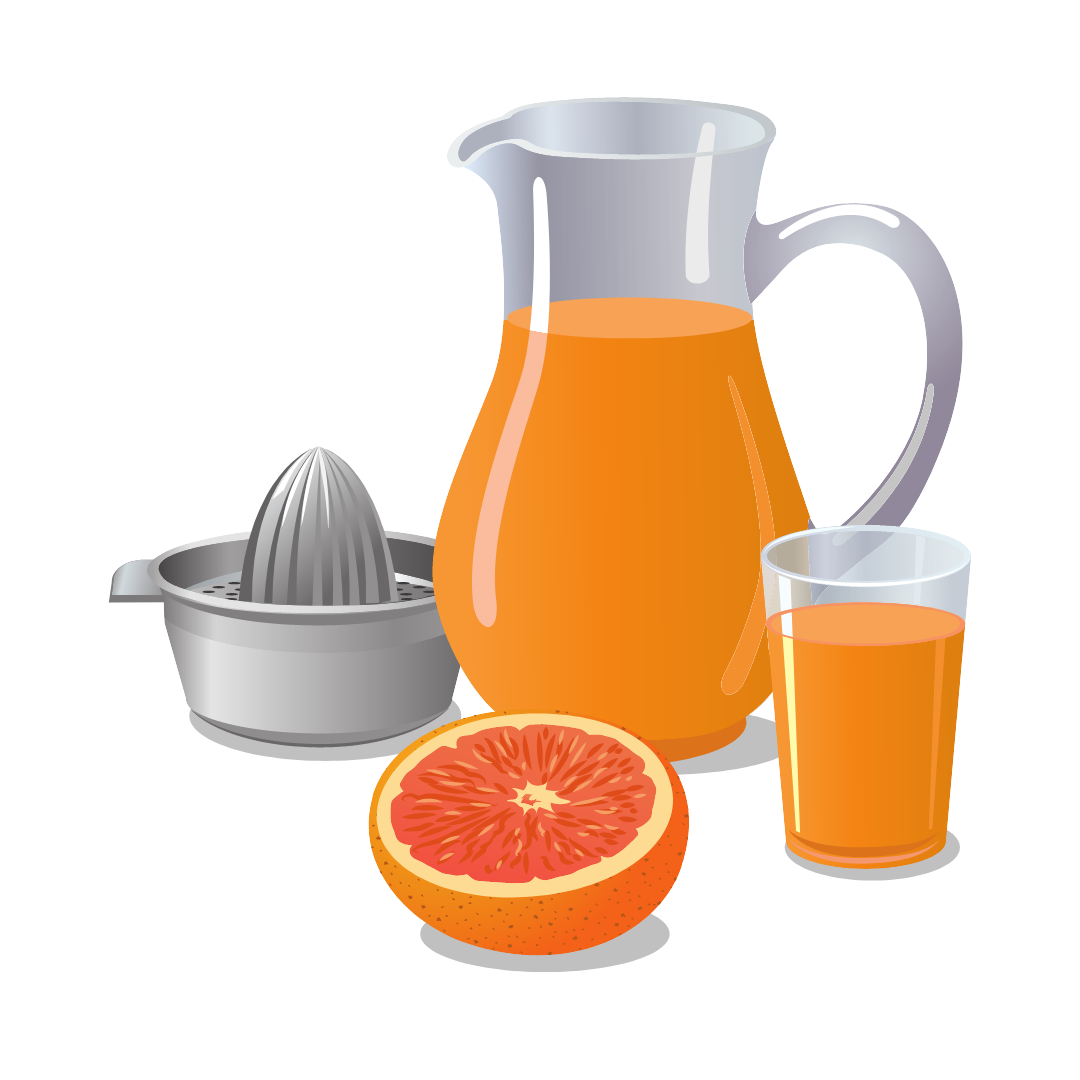
Fresh-squeezed juice is unquestionably high in vitamins and nutrients. Offering this option to consumers at your fitness club, spa, restaurant, or hotel can also be beneficial to your business!
Should You Add Juice to Your Menu?
If you're looking for a successful strategy to extend your menu, consider adding fresh juices.
Reduces Waste
If produce is past its prime for serving whole, consider using it in juices and smoothies instead of tossing it out.
Profitable
Fresh juice goods can have great profit margins with low overhead.
Juice can be served with breakfast, sold after mid-day workouts and spa treatments, or stirred into specialized drinks at night.
Trendy
Fresh juices are popular and stylish, and you can capitalize on consumers' growing desire to eat healthily.
Healthy
Reach out to a broader customer base by offering a healthy option that fits their lifestyle.
Unique
Seasonal juices prepared with local ingredients may demonstrate your dedication to your neighborhood while pulling customers back all year to discover what's fresh.
The Health Advantages of Juicing
Juice has many healthy benefits and can be an excellent way to increase the diversity of fresh fruits and vegetables in your normal or juice diet. Fresh juice is a fantastic option for clients looking for that advantage, or who simply want a healthy and refreshing alternative to sugary sodas or coffee drinks. Many juices (such as wheatgrass) are also excellent for adding energy and nutrition to smoothies and drinks!
One thing to bear in mind is that juice should not be used as a meal replacement. Also, eating fruits and vegetables whole will provide the greatest benefit. Many juices simply do not contain the same amount of fiber and other nutrients as their whole-meal counterparts.
Juicing Safety and Regulations
Making your own juices may be a healthy and profitable addition to your menu - or a lucrative company in its own right! However, there are some specific issues when selling, bottling, or distributing fresh juice.
Regulations and Licensing for Juicing
Juicing operations are subject to strict regulations in many towns and health authorities. Before launching your juice business, make sure to verify with your local and state regulatory agencies.
HACCP Guidelines
Because juice is made from fresh foods and is frequently not further processed, it is very vital to verify that fruits and vegetables are clean, that food safety requirements are followed, and that documentation systems are in place.
A HACCP plan is an excellent technique to assure food safety in any food processing facility. It is highly recommended for juice-making enterprises and is occasionally necessary if your product will be sold off-site. Check all applicable regulatory codes to see if you are required to have a HACCP plan.
How to Use Juicers Safely
Moving elements in commercial juicing machinery break down fruits, vegetables, greens, or herbs to separate the juice from the sediments. As a result, you should adhere to a few basic safety precautions.
- To ensure safe operation, read the manufacturer's instructions for use of your item.
- Make certain that all employees who will be using the equipment are appropriately trained.
- Never use your hands or culinary utensils to force food through a juicer. Only use the given pusher.
- Before putting food through the juicer, make sure it is well-prepped. Large seeds, stems, and thick peels should be removed depending on the type of vegetables and juicer utilized. Large things may also need to be chopped up.
Where Can I Get My Own Commercial Juicer?
A chef needs the best tools for the job. Here at Culinary Depot, we provide a variety of commercial juicers and blenders for your needs.
If you're looking for:
We have it! Can't decide? Contact us now and find the right blender for your needs.

